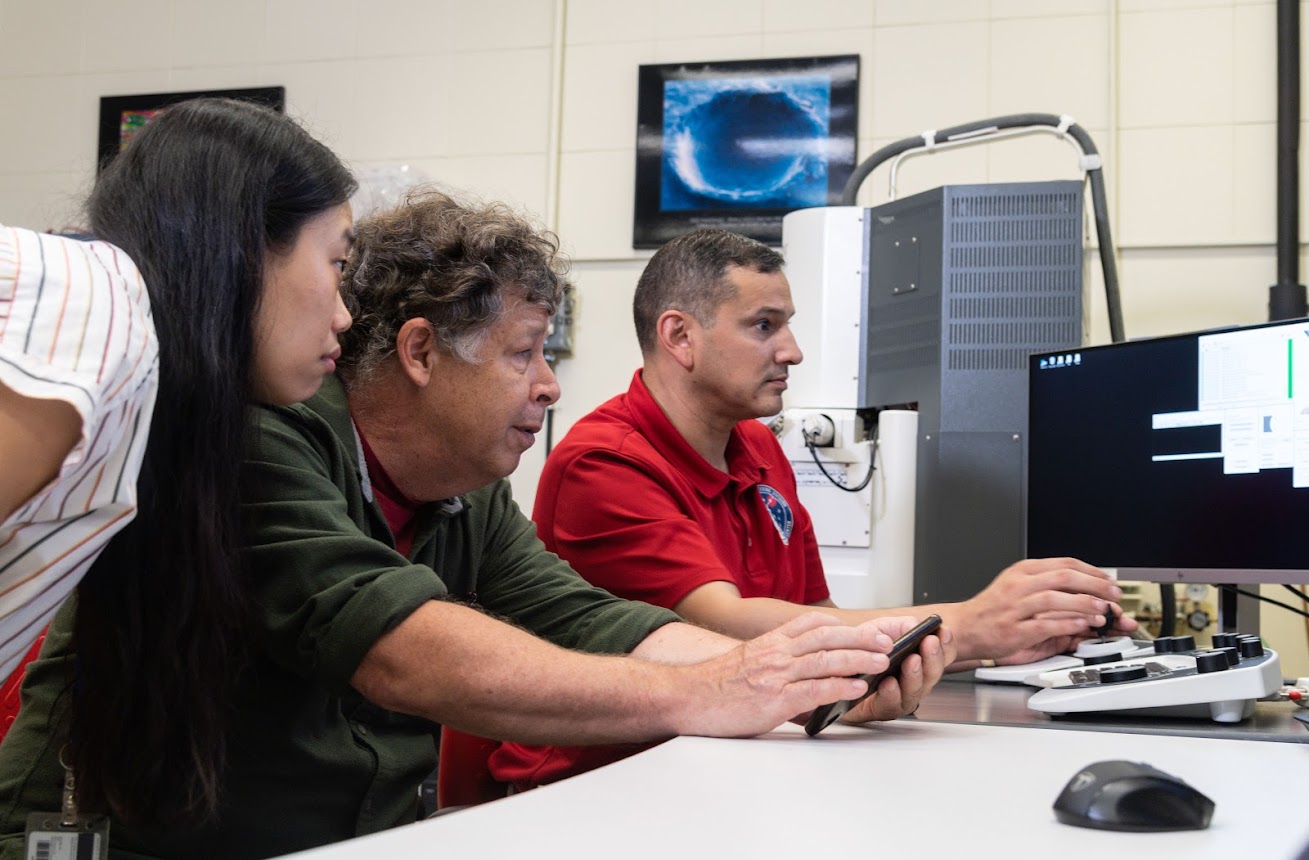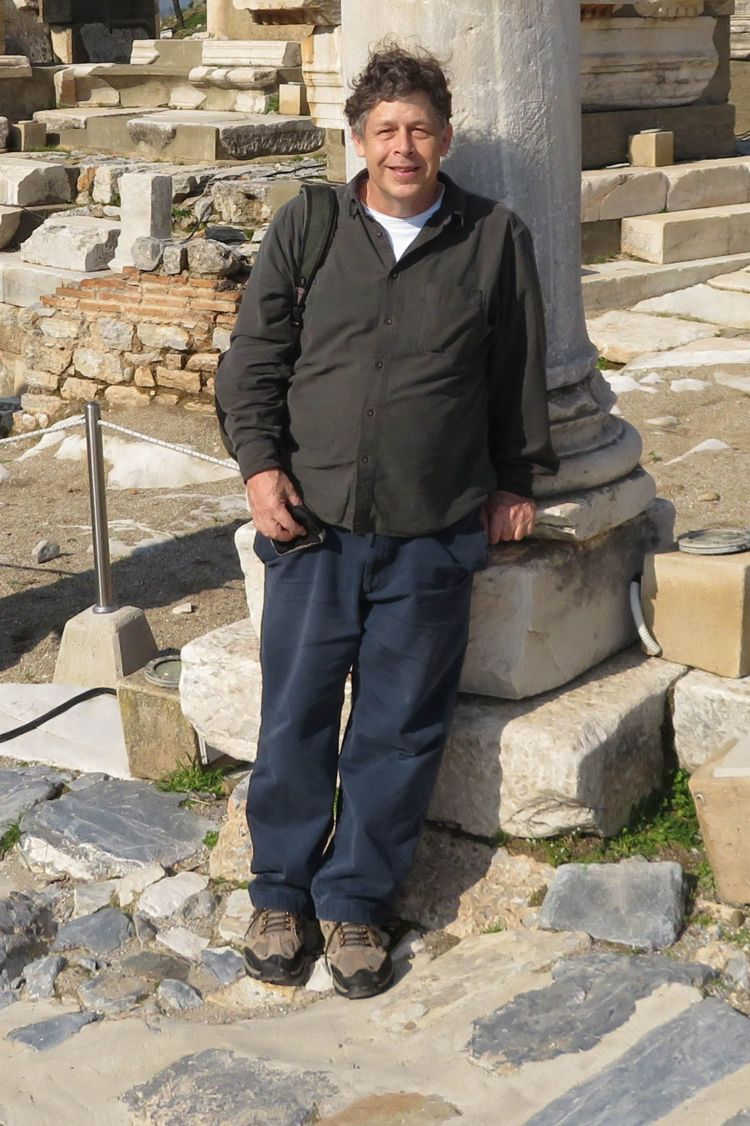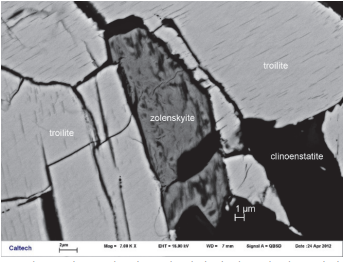Mineral’s Moniker Honors Johnson Space Scientist Michael Zolensky
To have someone named in your honor is very special indeed. To have a mineral named after you … well, that’s in another stratosphere altogether.
At NASA’s Johnson Space Center, space scientist Michael Zolensky in the Astromaterials Research and Exploration Science Division recently had a mineral named in his honor: zolenskyite. Zolensky has previously discovered four new minerals, so this process is not new to him.
“It was discovered by scientists at CalTech and UCLA in a meteorite called an enstatite chondrite,” Zolensky said. “Those are pretty rare meteorites, but they’re also interesting because they are possibly the precursor material for the Earth.”
The mineral claims the same composition as one previously known — an iron-chromium sulfide called daubréelite; however, this unique specimen is a high-pressure form of that, most likely formed by the shock of two asteroids colliding.
“Shocked minerals are really common in meteorites as asteroids that have been through the mill in terms of impacts through the history of the solar system,” Zolensky said.
Zolensky is making an impact in the geological realm, though perhaps not quite in the way he envisioned when he was young.
“I was never interested in space — I was always interested in minerals,” Zolensky noted. “I wanted to be a mineralogist, or geologist. I kind of thought I’d be living in Arizona or New Mexico … something like that. It was only when I did a post-doc(torate) at NASA that I got interested in looking at extraterrestrial materials. I never thought my field area would be not on Earth.”
Despite his circuitous path to the agency, Zolensky has lent his expertise on a number of pivotal robotic missions that are slowly decoding the universe, sample by sample. Some career highlights include breakthrough findings courtesy of Stardust, Hayabusa, and Hayabusa2.
“Well, for meteorites, it was the discovery of liquid water droplets in a meteorite,” Zolensky said. “For the Stardust mission, which was the first and only mission so far to bring samples back from a comet, we discovered that comets had a much more complicated history than we had ever imagined. That mission basically rewrote books on comets.”
While Stardust completely threw out the prevailing theory that comets formed entirely from materials far from the sun, Hayabusa’s results were less tempestuous, reaffirming what scientists had hypothesized as the source of the most common kinds of meteorites. Space science, understandably, can be a wild ride when one considers the vast origins of these extraterrestrial objects.
No matter what Zolensky and other mineralogists unearth, there is always more to learn. Better yet, he gets to work in the company of people who share his passion, also mentoring up-and-comers in the field.
“The most fun part is getting to know the new scientists and collaborating with them years later,” Zolensky said of partnering with the next generation — students spanning undergraduate to graduate and beyond. “Some of the interns I’ve had in the past are working with me now as space scientists, or around the country or around the world as space scientists.”
And who better to learn from than the first person at Johnson to hold the distinction of having a mineral named for him since the Apollo 11 astronauts? Zolenskyite shatters a more-than-50-year dry spell since armalcolite.
“One of the samples they brought back from the Moon contained a new mineral, which was named armalcolite in their honor (after Neil Armstrong, Buzz Aldrin, and Michael Collins),” Zolensky said.
He is confident it won’t take another 50 years for a mineral to receive a buzzworthy moniker. “Because of improvements in our laboratory capabilities, people are discovering new minerals in meteorites at a faster and faster rate.”
Like many at NASA, Mars is on the horizon for the seasoned space scientist; he is working with the Japan Aerospace Exploration Agency on their robotic MMX mission, which has an anticipated 2024 launch date. It will collect samples from Mars’ largest moon, Phobos, and return them to Earth potentially before this decade is out. Zolensky and his fellow scientists hope to answer long-held questions about the nature and transportation of water and organic material in the early solar system.
 Michael Zolensky, middle, uses a scanning electron microscope to analyze asteroid Ryugu samples with James Martinez (right) and JangMi Han (left). These samples, returned from the Japan Aerospace Exploration Agency's Hayabusa-2 mission, are being studied at NASA’s Johnson Space Center. Credits: NASA/James Blair
Michael Zolensky, middle, uses a scanning electron microscope to analyze asteroid Ryugu samples with James Martinez (right) and JangMi Han (left). These samples, returned from the Japan Aerospace Exploration Agency's Hayabusa-2 mission, are being studied at NASA’s Johnson Space Center. Credits: NASA/James Blair









